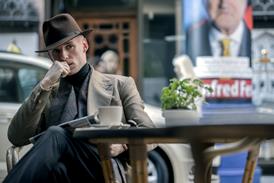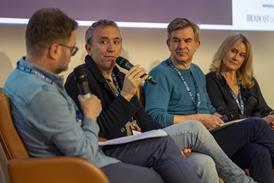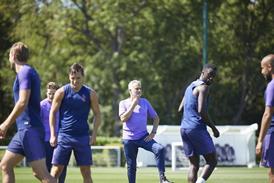Moritz Gimbel explains why the World Economic Forum is one of Bloomberg Television’s toughest gigs
The annual meeting of minds at the World Economic Forum draws an international media scrum, eager to gauge reaction to topics discussed and any key policy announcements made by influential government and business figures.
But it’s what goes on behind the scenes to deliver these breaking stories that interests me the most.
Bloomberg Television has been covering the event for more than 10 years with a team of more than 50 staff both on the ground in Davos and back in our London and New York newsrooms, helping to report live from the event and packaging up content that gets the key stories and interviews to our viewers fast.
To give you an idea of the scale of the operation I oversee, we haul more than 12 tonnes of IT and broadcast equipment up the mountain.
That includes several kilometres of cable, more than 100 screens, 50 PCs and eight server racks, all packed up in 74 flight cases, shipped from our Zurich and London warehouses. This makes it Bloomberg’s largest annual shipping exercise.
Working with our Swiss television production partner, Globallink, we set up a newsroom for 30 journalists, two rooftop studios and a state-of-the-art fly-away control room. Our studios pack a total of six HD cameras.
These days, much of the kit we bring out is pre-assembled in London and Zurich, to reduce the set-up time and complexity. Plus, we have introduced more remote control, automation and IT-based solutions. Four of our six cameras are centrally controlled rather than man-operated. All our content ingest is file-based and driven by our own broadcast automation systems. Live transmission and communication systems are IP-based and linked directly to London and New York.
The planning that goes into managing such a huge logistical challenge begins six to seven months in advance, where we look at designing and sourcing all the equipment we need to bring over.
We pre-build the set and wire it all up in the UK first and transport it two to three weeks before it all kicks off. A team of 13 technicians then descends on the main congress centre to pull it all together and test equipment to ensure the potential for glitches is minimised.
One of the toughest problems is lighting. In order to achieve our unique and exclusive view into the Davos valley we need to shoot directly south – into the sun!
This means we need to light the studios with giant HMI lights. This requires endurance from our anchors, looking into glaring lights, but also consumes the electricity of six standard households (LED has no chance yet but we are looking into it).
The most innovative and unique technical aspect of our set-up is the way we integrate the Davos newsroom with our global IT network. Usually a field operation means satellite uplinks and internet connections for video transport and communication.
We instead connect our pop-up newsroom to Bloomberg’s corporate IP network. All video transport and communication is done via IP over this highly capable infrastructure. This allows our reporters to browse our central video servers, work with minimal delays in live transmissions to New York, and even use the same IP telephones that they are used to from their home bureau.
We are constantly looking at ways we can enhance the Davos experience for our viewers which is why from next year, we aim to produce the whole event in HD, bringing high-quality content to Bloomberg’s increasing range of platforms on mobile, tablet and the web.
This unique event demands a lot of skill from our broadcast technicians, and although the hours are often long, it’s a highly motivating job to work on each year.
Moritz Gimbel head of production at Bloomberg Television EMEA





























No comments yet